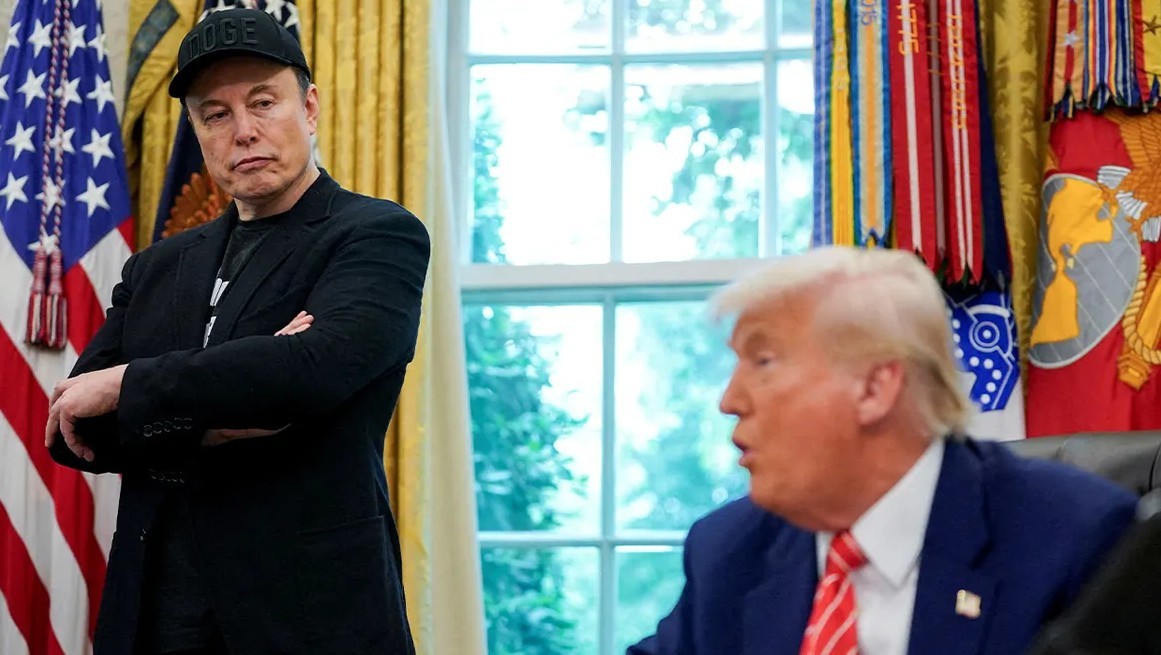Tesla Earnings Triple Miss as Musk's Political Interference and Rising Chinese Competition Weigh on Results — Even Big Dreams Can’t Lift the Stock
Tesla’s troubles are piling up. The just-released Q2 earnings report delivered a triple miss across the board, with double-digit declines in revenue and earnings, and no formal guidance provided. As C

Tesla’s troubles are piling up. The just-released Q2 earnings report delivered a triple miss across the board, with double-digit declines in revenue and earnings, and no formal guidance provided. As CEO Elon Musk’s political interference continues to damage the brand and Chinese EV competition intensifies, even the company's three big future narratives—full self-driving, a new mass-market model, and the humanoid robot Optimus—have failed to win over the market.
Q2 Results:
Total revenue: $22.5 billion, down 12% YoY — Tesla’s steepest quarterly revenue decline since 2012
Automotive revenue: $16.7 billion, down 16% YoY
Energy storage revenue: $2.8 billion, down 7% YoY
Gross margin: 17.2%, down 0.7 percentage points YoY, but up 0.9 points QoQ
EPS: $0.40, down 23% YoY, missing expectations of $0.43
Earlier this month, Tesla reported Q2 deliveries of 384,000 vehicles, down 14% YoY. The revenue miss was largely driven by a sharp slowdown in the energy storage segment (which had surged 67% in Q1), and a 50% YoY drop in regulatory credit revenue (down 26% QoQ). With the Trump administration preparing to eliminate EV subsidies, Tesla is bracing for prolonged headwinds.
Politics, Tariffs, and Branding Woes
Musk’s political overexposure is arguably a central reason behind Tesla’s sales slump. His leadership of the Department of Government Efficiency (DOGE), which oversaw mass layoffs and spending cuts, his public support for Germany’s far-right AfD party, and a very public falling-out with Trump have all alienated key consumer bases across the U.S. and Europe. Meanwhile, competition in China’s EV market is intensifying—Xiaomi’s SU7 remains a best-seller, and the newly launched Yu7 is clearly targeting the Model Y’s market share.
Tesla’s Q2 shareholder letter cited a “sustained uncertain macroeconomic environment,” pointing to “shifts in tariffs, fiscal policy, and political sentiment”—a veiled reference to the deteriorating Musk-Trump relationship.
During the earnings call, CFO Vaibhav Taneja confirmed that the recently passed “Big Beautiful Bill” will significantly impact Tesla’s business, as it eliminates the federal $7,500 EV tax credit, set to expire at the end of Q3. In response to new tariffs, Tesla has been forced to rework its supply chain.
“Given the abrupt change, we have limited supply of vehicles in the U.S. this quarter,” Taneja said. “We may not be able to guarantee delivery for orders placed in the latter part of August and beyond.”
He added, “If you’re in the U.S. and planning to buy a car this year, order now.”
Musk described Tesla as being in a “weird transition period,” dealing with expiring EV incentives and evolving autonomous driving regulations. “Does this mean we might have a few rough quarters? Yes, it probably does,” he admitted—without offering any guarantees.
Still Dreaming Big
Despite near-term pressures, Musk remains focused on long-term visions. Tesla confirmed that it began early builds of a more affordable model in June, with volume production expected in the second half of the year. This is likely the long-anticipated “Model 2,” rumored to start around $15,000.
In June, Tesla also launched its robotaxi service in Austin, Texas, in a limited area with safety drivers onboard. The company plans to expand both the service area and fleet. Musk stated that by the end of this year, the goal is to make autonomous ride-hailing available to half of the U.S. population—“subject to regulatory approval.” He also noted that full self-driving for personal use may arrive by year-end, with many owners joining the Robotaxi network in 2026 to generate passive income. Tesla expects meaningful financial contributions from this program starting late next year.
In Europe, if regulatory approval is granted, Tesla’s self-driving technology could significantly boost sales as well.
As for the humanoid robot Optimus, Musk said the Optimus 3 design does not suffer from the previously rumored flaws. A revamped prototype is expected this year, with mass production scheduled for 2026 and a long-term goal of producing 1 million units annually within five years.
Tesla is now caught between harsh near-term realities and lofty long-term dreams. Slumping EV sales, political backlash, and rising competition from China are taking a toll. Meanwhile, hopes for a budget model, robotaxis, and humanoid robots continue to support Tesla’s trillion-dollar valuation—but investors are growing increasingly skeptical, as Musk’s grand visions often miss timelines or underdeliver.
In a market currently obsessed with AI and influenced by Trump-era policies, Tesla may continue to struggle in the near term.
Disclaimer: The views in this article are from the original Creator and do not represent the views or position of Hawk Insight. The content of the article is for reference, communication and learning only, and does not constitute investment advice. If it involves copyright issues, please contact us for deletion.